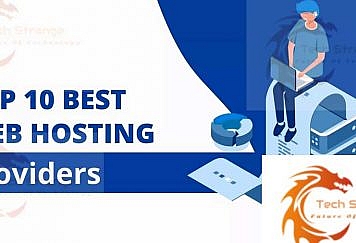Maybe before the COVID period, one could have doubt, but now it’s a given that online video is here to stay. To wit, according to Statista, the revenue of the OTT segment is expected to make up $205 billion in 2022, with video advertising alone reaching almost $107 billion.
These wow stats make us think the demand for video streaming development is only going to grow. However, in the OTT world, where viewer behavior and preferences are changing fast, promoting your service is not always easy. To meet the user needs to the fullest and increase customer satisfaction, be ready to go the whole hog.
Besides must-have things like robust architecture for smooth streaming, rock-solid security for content and user data protection, as well as pixel-perfect UI, pay attention to the aspects that can take viewer engagement to the next level.
Hyper-Personalization
More and more companies are trying to deliver a tailored experience — and for a good reason:
- 80% of consumers prefer buying from a company that personalizes their offering
- 66% of customers expect brands to delve into their specific needs
- 70% of users say that personalization impacts their loyalty
These figures are relevant to any industry, and in such a direct-to-consumer environment like OTT, the importance of personalization increases several-fold. Viewing interests and behavior tend to change fast, and it’s becoming increasingly difficult to predict what viewers will enjoy next. If you want to retain more eyeballs and entice them to watch more, make the most of machine learning and data analytics.
Feed your recommendation engine with various data sources, including the viewing history, movies’ popularity, social media information, as well as movie metadata (actors, reviews, genres, parental rating, etc.). Also, don’t underestimate the power of aspects such as demographics, language, age group, locations, time of day, device type, and watch time.
A thorough analysis of all these parameters will help you automatically deliver hyper-personalized content suggestions as well as tailor payment methods and subscription options.
You can capitalize on ML to personalize not only video content but also movie imagery. By leveraging info on viewer preferences — favorite genres and actors — you’ll be able to generate the most relevant poster for a movie, in turn, engaging users to watch more.
Similar ML mechanisms can work great with an automated compilation of other promo materials like trailers, synopses, and metadata — leading to a significant improvement in how viewers find new content and consume it.
Scene-based Ads Insertion
AVOD services continue gaining traction, and stats by eMarketer are clear proof. In 2020, ad-supported video delivery grew by 30.3%, and in four years it’s projected that more than 50% of US internet users will be AVOD viewers. To prepare for increasing competition in this regard, pay particular attention to what ads you serve and how you do it.
With ML, you’ll be able to automatically analyze the whole piece of content and identify the most relevant place for ad insertion — without scene splitting. Finding the optimal spot means the ads will be adapted to particular scenes in videos and, if needed, based on viewer preferences and behavior. For example, scenes in restaurants or shopping malls can be accompanied by ads featuring food or household items. And commercials of beauty services can go well with girly films.
Brand safety is another aspect you can notably improve with ML-based context and ads analysis. This innovative method will allow you to avoid the automatic placement of dubious ads next to your video and prevent fraud.
As a result, such customization and personalization will help you make your commercials less annoying and more relevant to the audience, leading to high satisfaction rates and better engagement.
ML is also key to driving comprehensive ad analytics. Namely, by gauging conversions and viewer reactions, you’ll understand the most profitable ad forms and contexts. This, in turn, will empower you to optimize your digital advertising strategies and increase the bottom line.
Engaging Functionality
High viewer engagement is an indispensable ingredient in a recipe for video streaming success. The more engaged users are, the more content they watch and recommend to their friends, which results in brand loyalty and great revenue. So if you want to drive such an interaction, be ready to implement cutting-edge functionality.
As GWI reports, 86% of viewers turn to second devices like iPhones and tablets while watching a primary one (usually TV or laptop). Use these stats to your favor to entertain viewers and add an extra layer of comfort.
Second screening features help users find out more about the content they are watching (actors, directors, teams, etc.), share opinions about the video via social media or messengers, enjoy an array of games and polls related to the main content, and more. Such functionality is also a great chance to boost T-commerce and cross-selling. This way, you can nudge users to purchase branded merchandise or products they notice on the main screen as well as buy more content — based on their preferences.
Besides enhancing viewer interactivity both during the broadcast and commercials, the second screening gives you an opportunity to capture and analyze viewer sentiments, which is important for launching effective advertising campaigns.
Among other features that can help you stand out from the crowd on the online video, the market is VR and 360° video. For example, if you deliver sports content, you can immerse viewers in virtual tours over the whole venue and stream matches from every possible angle. And if your primary content includes TV shows, audiences can enjoy the live stream of what’s happening not only on stage but also behind the scenes. Additionally, metrics like video views, average time spent, heat map, and VCR will help to gauge the effectiveness of such engaging functionality.
On A Final Note
The OTT market is becoming more and more competitive. So to continuously expand your viewer base and maintain high customer satisfaction, you should put the user in the center of attention. The personalized service offering, non-intrusive ads, enticing features — these and other out-of-the-box tools are indispensable for your content delivery strategy.
Follow TechStrange for more Technology, Business, and Digital Marketing News.





